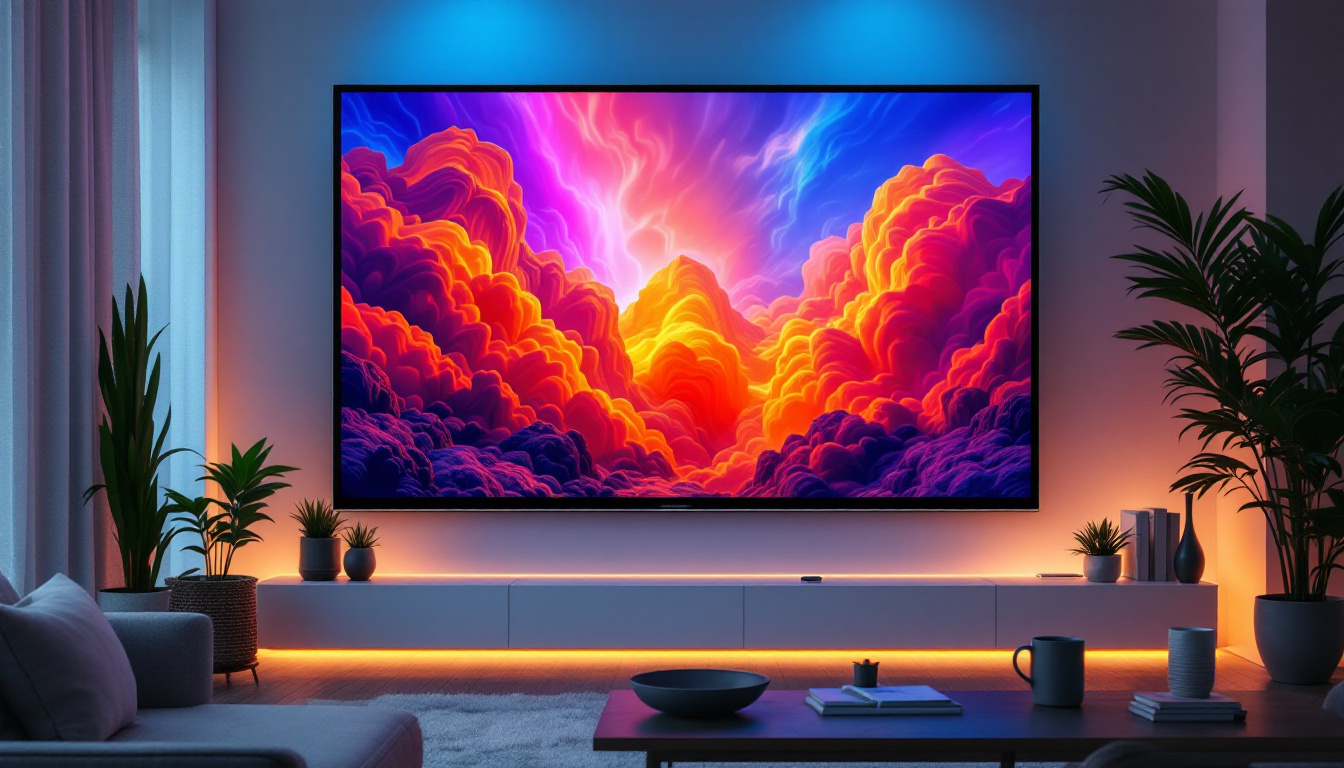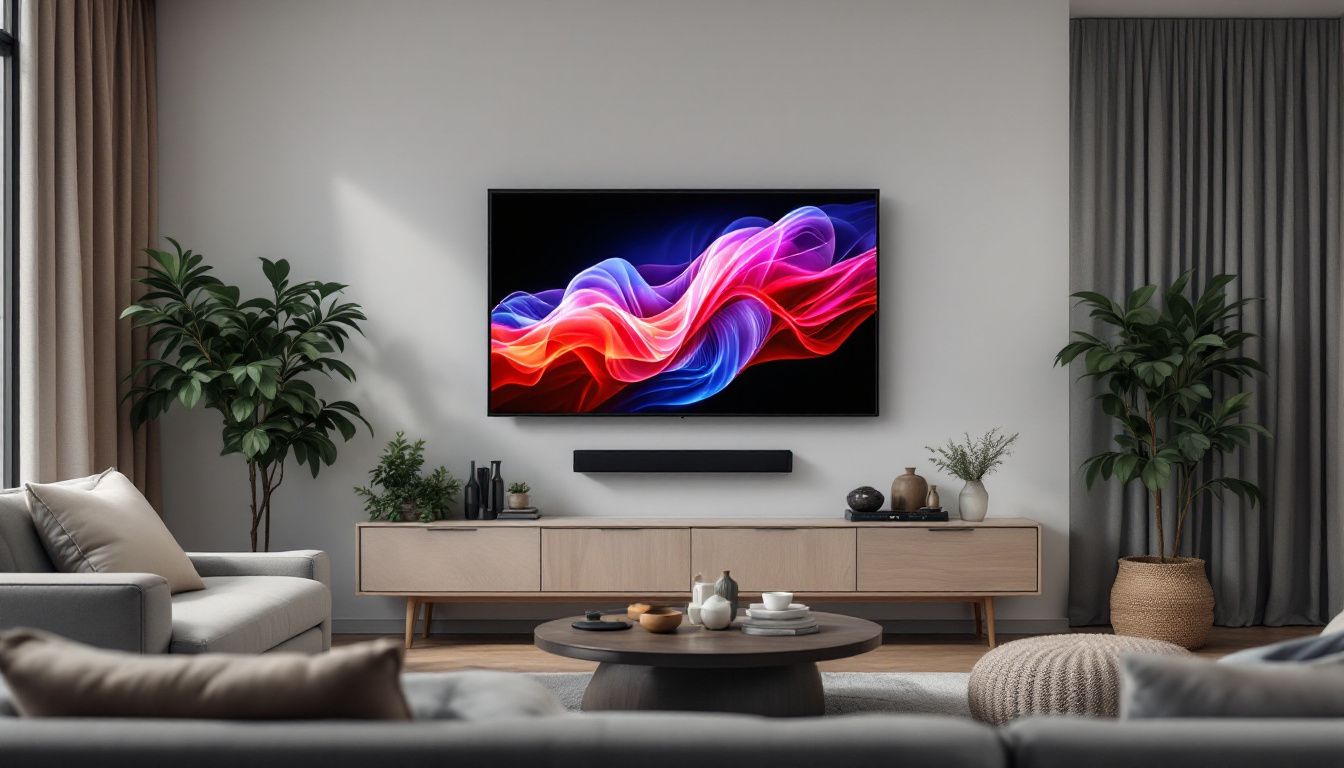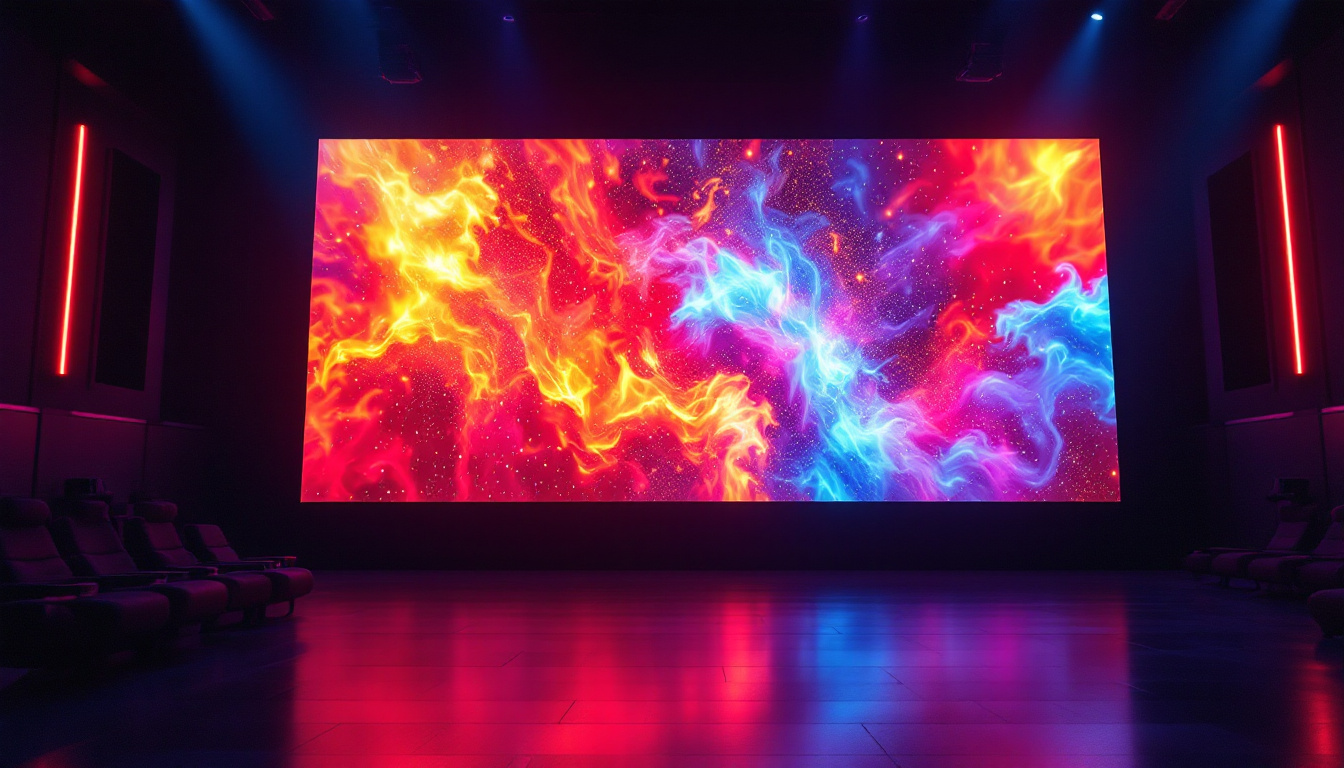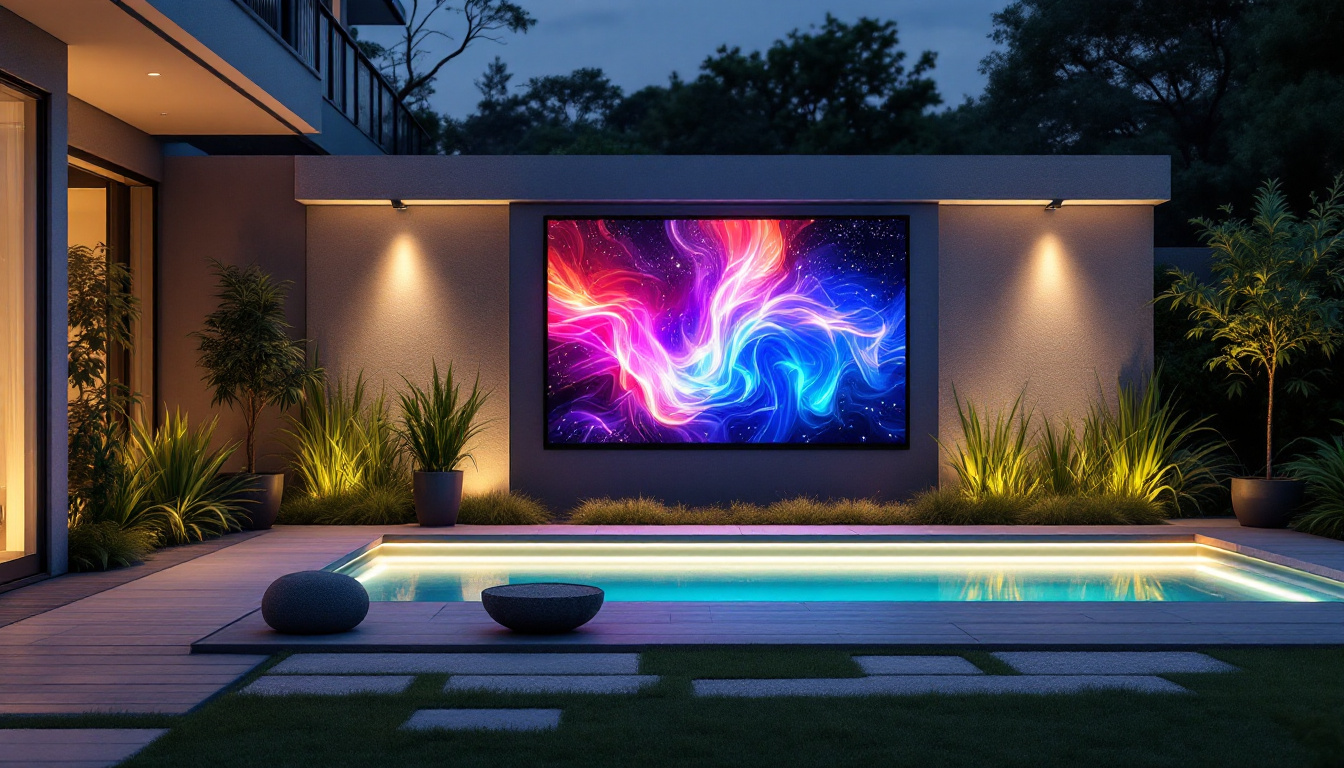Display TVs: LED Display Explained
In the rapidly evolving world of television technology, LED displays have become the dominant choice for consumers seeking vibrant picture quality, energy efficiency, and sleek designs. But what exactly is an LED display, and how does it differ from other television display technologies? This article delves deep into the workings of LED TVs, their advantages, limitations, and how they compare to other display types to help you make an informed decision when purchasing your next television.
Understanding LED Display Technology
What Does LED Stand For?
LED stands for Light Emitting Diode, a semiconductor device that emits light when an electric current passes through it. In the context of televisions, LEDs serve as the backlighting source for the display panel, illuminating the pixels that form the images on the screen. The technology behind LEDs has evolved significantly since their inception, leading to improved energy efficiency and longer lifespans compared to traditional lighting methods. This advancement has made LEDs a popular choice not only for televisions but also for a wide range of applications, including automotive lighting, street lamps, and even decorative lighting in homes.
How LED TVs Work
LED TVs are essentially LCD (Liquid Crystal Display) TVs that use LEDs as the backlight instead of the older cold cathode fluorescent lamps (CCFLs). The LCD panel itself doesn’t emit light; it acts as a filter, controlling how much light passes through each pixel to create images. The LEDs provide the necessary illumination behind or around the LCD panel. This combination allows for sharper images and more vibrant colors, enhancing the viewing experience significantly. Furthermore, the use of LEDs contributes to a reduction in power consumption, making LED TVs more environmentally friendly and cost-effective over time.
There are two primary types of LED backlighting used in LED TVs:
- Edge-Lit LED: LEDs are placed around the edges of the screen, and light is spread across the display using light guides. This design allows for thinner TVs but can sometimes lead to uneven brightness. However, manufacturers have made strides in improving this technology, incorporating features like dynamic contrast enhancement to mitigate these issues.
- Full-Array LED: LEDs are placed directly behind the entire screen in a grid pattern. This allows for better control of brightness and contrast through local dimming, where specific zones can be dimmed or brightened independently. This results in deeper blacks and more detailed shadows, making it particularly advantageous for viewing high-definition content.
In addition to these backlighting techniques, many LED TVs now incorporate advanced technologies such as Quantum Dot and OLED (Organic Light Emitting Diode) enhancements. Quantum Dot technology utilizes tiny semiconductor particles to produce purer colors and improve overall picture quality, while OLED displays offer the unique advantage of self-emissive pixels, allowing for true blacks and an infinite contrast ratio. As the market continues to evolve, consumers can expect even more innovative features that enhance their viewing experience, such as smart connectivity options and integration with home automation systems.
Advantages of LED TVs
Superior Energy Efficiency
Compared to older CCFL-backlit LCD TVs, LED TVs consume significantly less power. According to the U.S. Department of Energy, LED backlighting can reduce energy consumption by up to 30-40%, making these TVs more environmentally friendly and cost-effective over time.
Improved Picture Quality
LED TVs offer better brightness levels and contrast ratios than their CCFL counterparts. Full-array LED TVs with local dimming can achieve deeper blacks and more vivid colors, enhancing the overall viewing experience. This is particularly noticeable in dark scenes where LED TVs can minimize light bleed and improve detail.
Thinner and Lighter Designs
Because LEDs are smaller and more efficient than fluorescent lamps, manufacturers can produce thinner and lighter television sets. This has led to sleek, wall-mountable designs that blend seamlessly into modern living spaces.
Different Types of LED Displays
Edge-Lit vs. Full-Array LED
As mentioned earlier, edge-lit LED TVs are generally more affordable and slimmer but may suffer from uneven brightness and less effective local dimming. Full-array LED TVs tend to be thicker and more expensive but provide superior picture quality due to better light control.
Mini-LED Technology
Mini-LED is an emerging technology that uses thousands of tiny LEDs as backlighting, allowing for even more precise local dimming and improved contrast. This technology bridges the gap between traditional LED TVs and OLED displays, offering higher peak brightness and better HDR performance. Brands like TCL and Samsung have started incorporating Mini-LEDs in their premium models, appealing to enthusiasts seeking top-tier picture quality without the higher cost of OLED.
Micro-LED: The Future of LED Displays
Micro-LED technology takes LED displays to the next level by using microscopic LEDs that act as individual pixels, eliminating the need for a separate backlight. This results in exceptional brightness, contrast, and color accuracy, rivaling OLED displays without the risk of burn-in. However, Micro-LED TVs are currently prohibitively expensive and primarily targeted at commercial and luxury markets.
LED TVs Compared to Other Display Technologies
LED vs. OLED
OLED (Organic Light Emitting Diode) displays differ fundamentally from LED TVs. Each pixel in an OLED screen emits its own light, allowing for perfect blacks and infinite contrast ratios. This results in superior picture quality, especially in dark scenes. However, OLEDs are generally more expensive and can suffer from burn-in with static images.
LED TVs, especially those with full-array local dimming or Mini-LED technology, offer excellent brightness and are less prone to burn-in, making them a better choice for bright rooms or gaming. The choice between LED and OLED depends largely on budget, viewing environment, and usage patterns.
LED vs. QLED
QLED (Quantum Dot LED) is a marketing term used primarily by Samsung and other manufacturers to describe LED TVs enhanced with quantum dot technology. Quantum dots are nanocrystals that improve color accuracy and brightness by emitting precise wavelengths of light when illuminated by the LED backlight.
QLED TVs are essentially LED TVs with improved color performance and brightness, making them particularly well-suited for HDR content. They tend to be brighter than OLEDs but may not achieve the same level of black depth.
LED vs. Plasma
Plasma TVs, once popular for their excellent color reproduction and deep blacks, have largely been phased out in favor of LED and OLED technologies. Plasma displays used small cells containing electrically charged ionized gases to produce images, but they were heavier, consumed more power, and were prone to screen burn-in.
LED TVs offer better energy efficiency, thinner designs, and improved longevity, which contributed to the decline of plasma technology in the consumer market.
Key Features to Consider When Buying an LED TV
Resolution and Screen Size
Most LED TVs today come with 4K resolution (3840 x 2160 pixels), which provides excellent detail and sharpness for modern content. While 8K TVs are emerging, content availability and cost remain limiting factors for widespread adoption.
Screen size should be chosen based on room size, viewing distance, and personal preference. A general guideline is to sit at a distance approximately 1.5 to 2.5 times the diagonal screen size for optimal viewing.
Refresh Rate and Motion Handling
Refresh rate, measured in hertz (Hz), indicates how many times the image on the screen is updated per second. Higher refresh rates (120Hz or above) provide smoother motion, which is particularly important for sports and gaming. Some LED TVs use motion interpolation technologies to enhance perceived smoothness, but these can sometimes introduce artifacts or the “soap opera effect.”
HDR Support
High Dynamic Range (HDR) enhances the contrast and color range of content, making images more lifelike. Popular HDR formats include HDR10, Dolby Vision, and HLG. When shopping for an LED TV, verify which HDR standards are supported and the TV’s peak brightness, as these factors significantly impact HDR performance.
Smart TV Features
Most modern LED TVs come equipped with smart platforms that provide access to streaming services, apps, and voice assistants. The quality and responsiveness of these platforms vary between manufacturers, so it’s worth exploring user reviews and trying interfaces in-store if possible.
Common Misconceptions About LED TVs
LED TVs Emit Blue Light Which Is Harmful
While LED TVs do emit blue light, just like other digital screens, the levels are generally within safe limits. Manufacturers have also introduced blue light reduction modes to minimize eye strain during extended viewing sessions.
LED TVs Are the Same as OLED
As discussed, LED and OLED are distinct technologies with different strengths and weaknesses. Understanding these differences is crucial in selecting the right TV for your needs.
All LED TVs Have Poor Viewing Angles
Older LED TVs, especially those with VA (Vertical Alignment) panels, often had narrow viewing angles, causing colors and contrast to shift when viewed off-center. However, many modern LED TVs use IPS (In-Plane Switching) panels or advanced technologies to improve viewing angles significantly.
Conclusion: Is an LED TV Right for You?
LED TVs represent a mature and versatile technology that balances picture quality, energy efficiency, and affordability. With advancements like full-array local dimming, Mini-LED backlighting, and quantum dot enhancements, LED TVs continue to close the gap with more expensive OLED displays.
For most consumers, an LED TV offers excellent value, especially for bright rooms, gaming, and general-purpose viewing. Understanding the nuances of LED technology and how it compares to other display types empowers buyers to select the best television for their lifestyle and budget.
As the TV market continues to innovate, keeping abreast of emerging technologies like Micro-LED and improved HDR standards will ensure that your next purchase remains future-proof and satisfying for years to come.
Explore Cutting-Edge LED Displays with LumenMatrix
Ready to experience the pinnacle of LED display technology? LumenMatrix is at the forefront of innovation, offering a wide array of LED display solutions that cater to any need—from Indoor and Outdoor LED Wall Displays to specialized options like Vehicle, Sports, and Floor LED Displays. Whether you’re looking to enhance brand visibility or create immersive visual experiences, LumenMatrix’s mission is to revolutionize visual communication with digital signage that captivates and engages. Elevate your visual presence and share your message with unparalleled clarity. Check out LumenMatrix LED Display Solutions today and see the difference for yourself.































